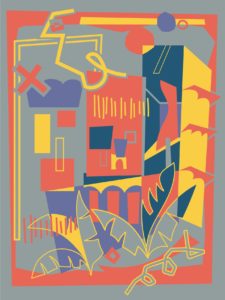Can AIs Create True Art?
 At GumGum, an AI company that focuses on computer vision, we wanted to explore the intersection of AI and art by devising a Turing Test of our own in association with Rutgers University’s Art and Artificial Intelligence Lab and Cloudpainter, an artificially intelligent painting robot. We were keen to see whether AI can, in fact, replicate the intent and imagination of traditional artists, and we wanted to explore the potential impact of AI on the creative sector.
At GumGum, an AI company that focuses on computer vision, we wanted to explore the intersection of AI and art by devising a Turing Test of our own in association with Rutgers University’s Art and Artificial Intelligence Lab and Cloudpainter, an artificially intelligent painting robot. We were keen to see whether AI can, in fact, replicate the intent and imagination of traditional artists, and we wanted to explore the potential impact of AI on the creative sector.
Even though the Cloudpainter machine has evolved over time to become a highly intelligent system capable of making creative decisions of its own accord, the final piece of work could only be described as a collaboration between human and machine.
Moreover, until AI can be programed to absorb inspiration, crave communication and wantto express something in a creative way, the work it creates on its own simply cannot be considered art without the intention of its human masters. Creatives working with AI find the process to be more about negotiation than experimentation.
THERE’S AN ACTIVE ROLE BETWEEN ART AND VIEWER
How traditional art purveyors react to AI art on the world stage is yet to be seen, but in the words of Leandro Castelao—one of the artists we enlisted for the study—“there’s an active role between the piece of art and the viewer. In the end, the viewer is the co-creator, transforming, re-creating and changing.” This is a crucial point; when it’s difficult to tell AI art apart from human art, the old adage that beauty is in the eye of the beholder rings particularly true.
Pages
- About Philip Lelyveld
- Mark and Addie Lelyveld Biographies
- Presentations and articles
- Tufts Alumni Bio